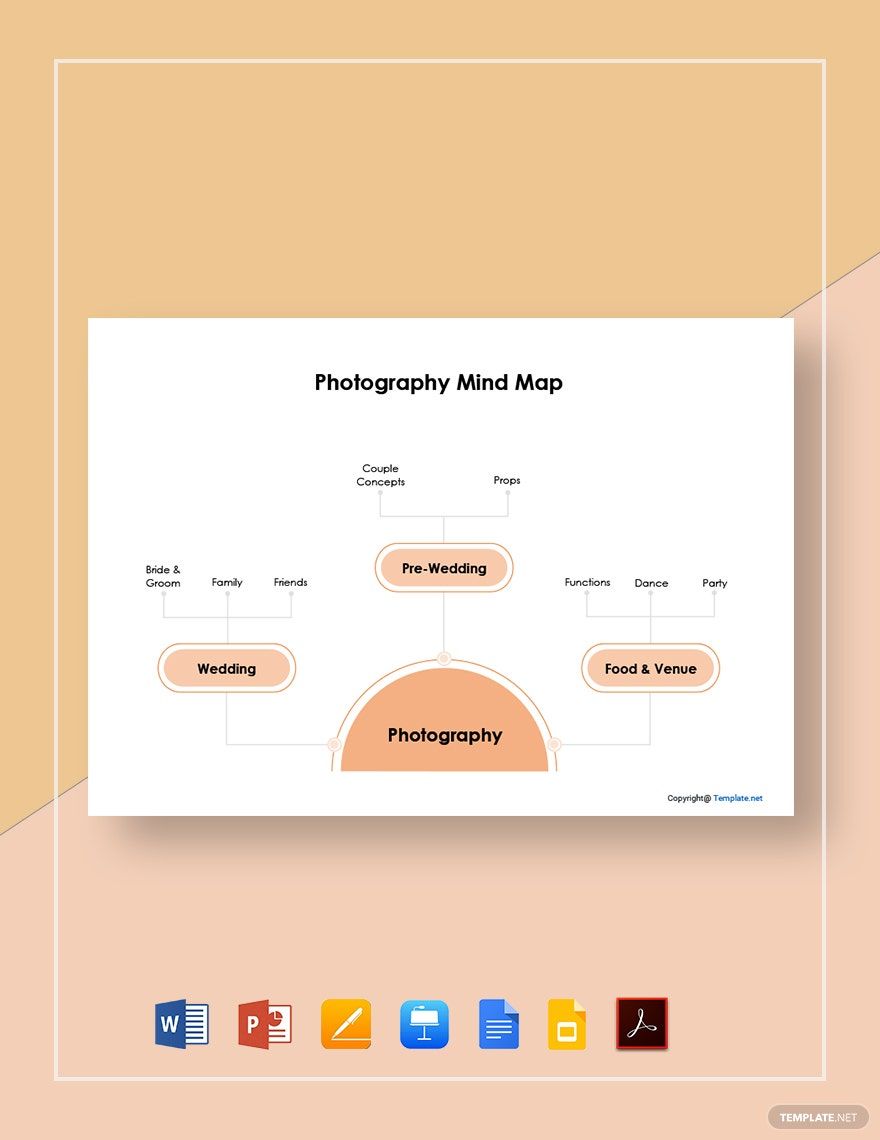
Free Printable Photography Mind Map Template Google Docs, Google Slides, Apple Keynote
1. Normal Low-Light Conditions Low-light photography is not just about taking photos in the dead of night. In fact, even indoors in the middle of the day is usually "low light" as the camera sees it. And you can get really bad image quality in those situations unless you know what you're doing.

Here is a mind map I produced based on how to incorporate text into photos in camera less ways
Consider the following adjustments: a. Increase ISO: Boosting your camera's ISO sensitivity allows it to capture more light. However, higher ISO settings can introduce noise or grain in your images. Experiment with ISO settings to find the right balance between light sensitivity and noise levels for your camera. b.

Photography Mind Map Template Visme
What do I need to keep in mind for low-light photography? There are many different ways to improve the quality of your shots in the dark. Use a wide aperture, increase the ISO and lower the shutter speed if you can. Mount your camera to a tripod, repurpose any available light sources and always shoot in RAW. Hopefully, with these tips in mind.
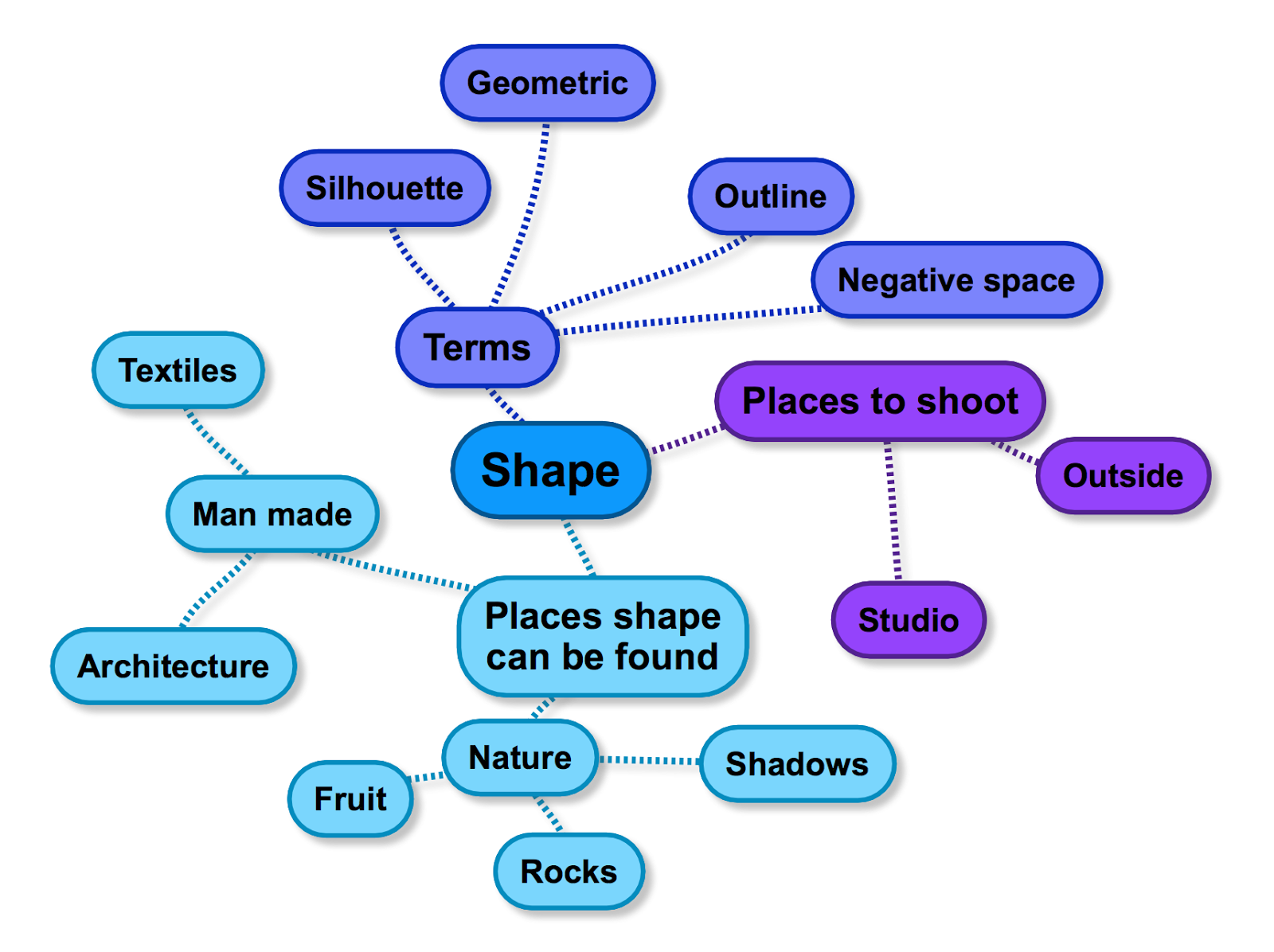
Emma Weeks AS Photography Component 1 Shape Mind map
When I was shooting a lot in low light, before the fashion days, I had a trio of fast zooms. I still do. Here they are: Canon EF 16-35mm f/2.8, Canon EF 24-70mm f/2.8, Canon EF 70-200mm f/2.8.
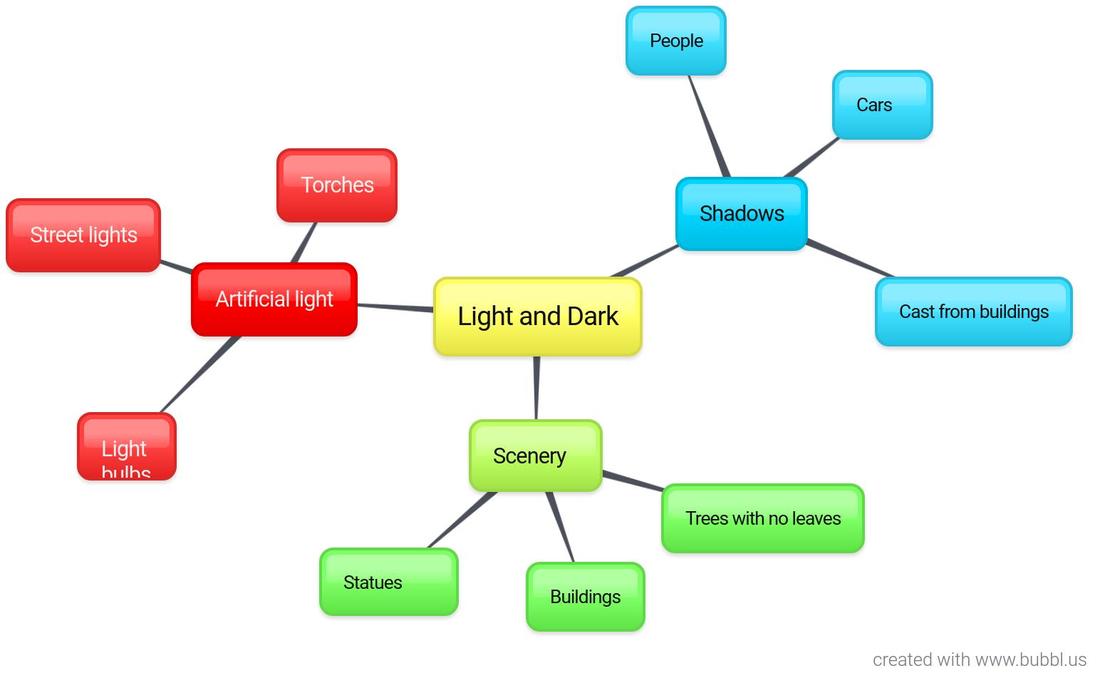
Light and Dark Kyle Howey WDS GCSE Photography
11 0 Resource summary Photography Aperture Controls how much light enters the lens affects depth of field Wider aperture = shallow depth of field Narrow Aperture = most or all the image will be in focus In order to be in focus, need more light= longer exposure time Wider Aperture = only a select portion of the image will be in focus. Shutter Speed
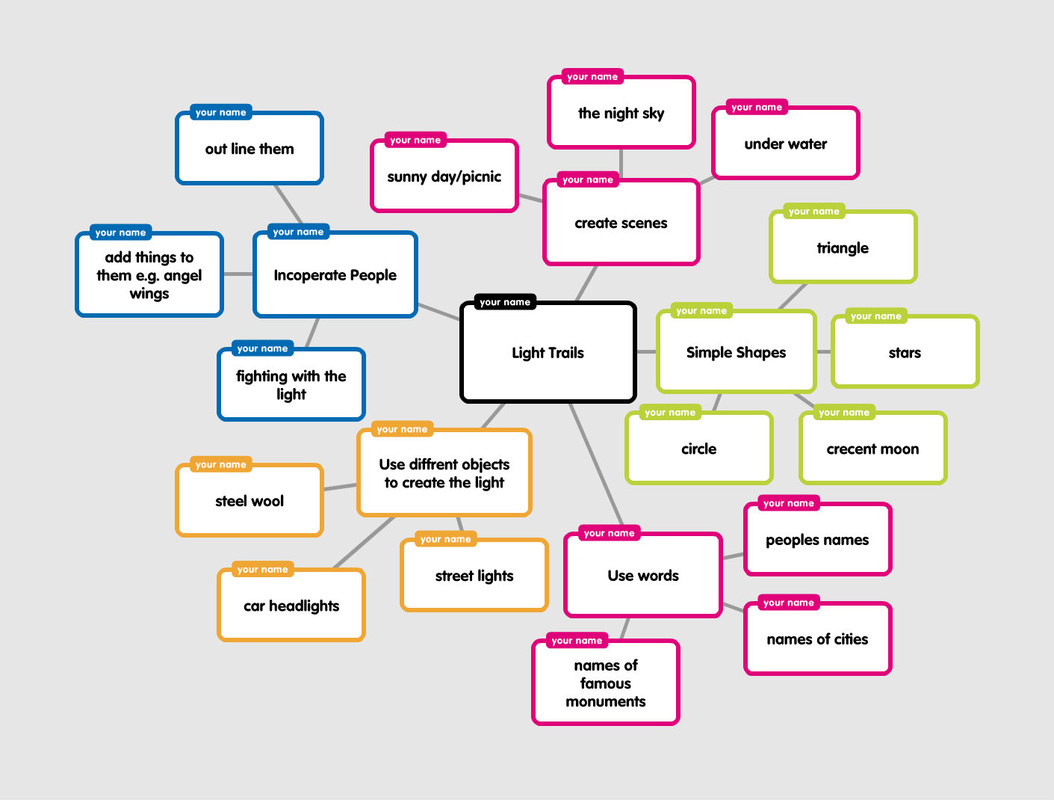
Light Trails Lottie Simpkins GCSE Photography
a) Available light - how low is the light. As with anything to do with exposure, your camera settings are entirely dependent on the amount of available light - be that natural light or any light you add to the scene. Camera settings: 1/125th, F4, ISO 400, 35mm.
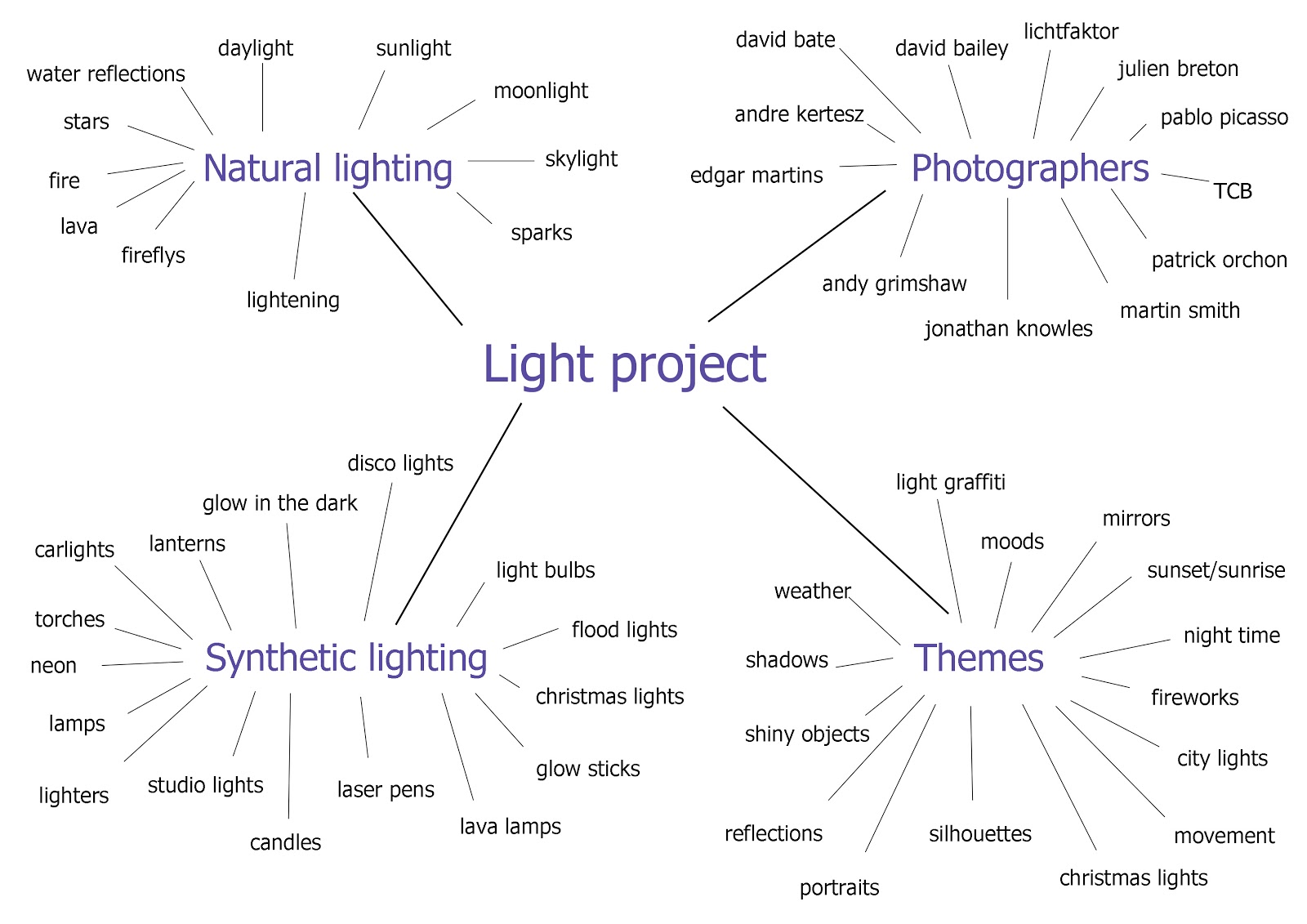
Katie Back Photography Mindmap
Something you're definitely going to need for your low-light or night-photography shoot is a torch or flashlight, both for finding a position at night or before sunrise, or for exiting an area safely after the sun has set. However, when the light levels drop it's also useful for illuminating a subject to autofocus on it.

Photography mind map and mood board Thai Collings
Low light photography comes with two unique challenges for photographers: Camera shake Motion blur Camera shake refers to situations where the camera actually moves while you take a photo. This causes blur, even if your subject is stationary. Here's an example of camera shake: In this case, the camera shake was for deliberate effect.

Photography Mind Map Lucid for Education
Low light photography is a typical situation where you need to take control of your camera. If Manual Mode is not something you feel comfortable with you can set the camera on Shutter Speed Priority Mode. In this Semi-Automatic Mode, you'll be able to set the shutter speed yourself and the camera will choose the aperture.. #9 Mind Your Focus.

Yvonne Masters Photography Blog Mindmap of Light AS Photography
Low light photography is the practice of capturing photographs in challenging, sub-optimal lighting. Because of this, photographers need to learn special techniques, and use special equipment like tripods to counter the specific challenges that these environments create, yet be able to consistenly capture images that are sharp, well defined and.
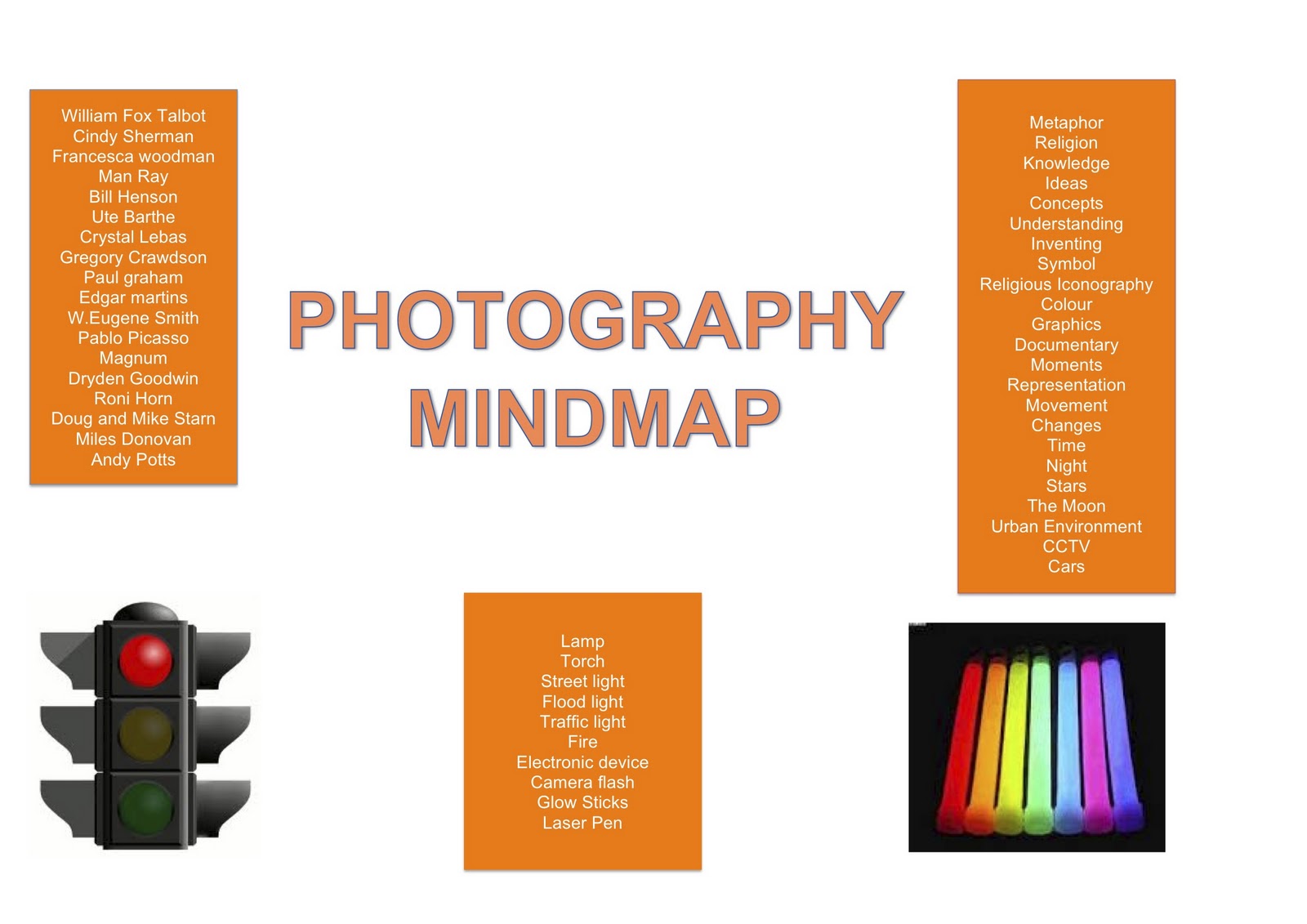
Duran Young Photography Light Photography Mind Map
The order in which you adjust your camera settings is key to knowing how to take portraits in low light. Start off with your aperture, get that set to give you the right depth of field you need. Secondly, adjust your shutter speed. Anything slower than 1/60th get the camera on a tripod. Lastly, raise the ISO.
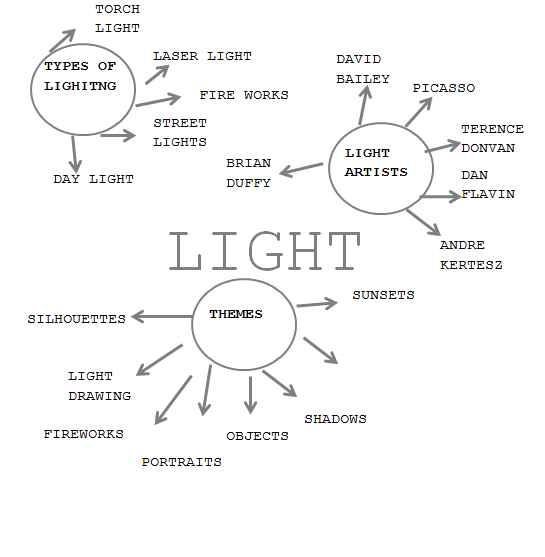
Dani Cardoso Photo MIND MAPLIGHT
Tip #1: Use a tripod and shutter release cable Tip #2: Use your camera's RAW setting whenever possible Tip #3: Consider a wider aperture or a faster lens Tip #4: Increase your camera's ISO setting and use DeNoise AI to remove the resulting noise Tip #5: Take bracketed exposures for HDR tone-mapping Wrapping it up Introduction
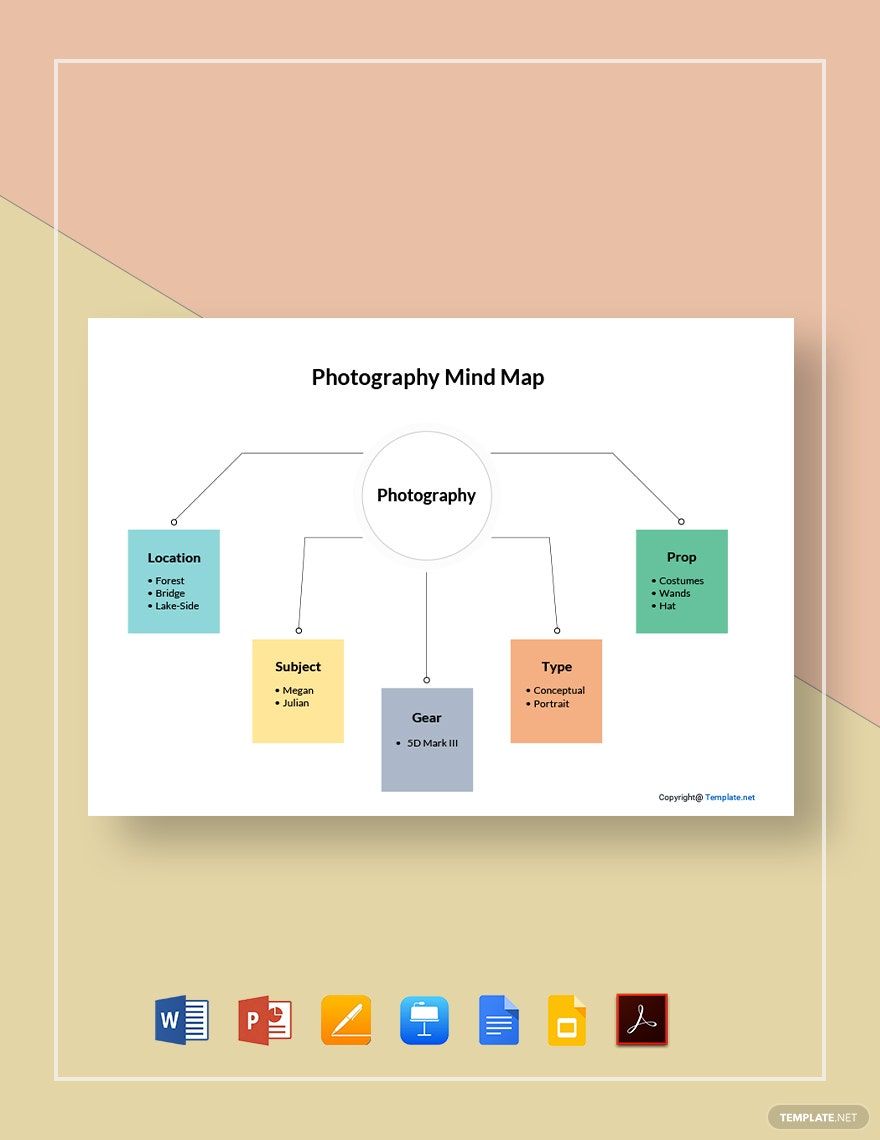
Landscape Photography Mind Map Template Google Docs, Google Slides, Apple Keynote, PowerPoint
When shooting in low light, it's essential to minimize camera shake to avoid blurry photos. To achieve sharp images, consider using a tripod or enable image stabilization on your camera or lens if available. These tools help stabilize the camera, allowing for longer exposure times without causing blurriness.

Emma Weeks AS Photography Component 1 Movement Mind map
1. Understand the exposure triangle 2. Use your histogram, not just your camera's LCD 3. Learn how your shutter speed can affect your photographs 4. Zoom in to 100% 5. Use a wider aperture 6. Buy a faster lens 7. Increase your ISO 8. Shoot RAW

Imogen Lawrence Photography Light Mind Map
And that's especially true indoors or under the soft, diffuse light near the edges of the day. Low light portrait photography is defined by low levels of illumination that, with a physically wide lens aperture (e.g., f/4 or wider) and a camera sensitivity of around ISO 100, results in a shutter speed that's slower than 1/60 second.
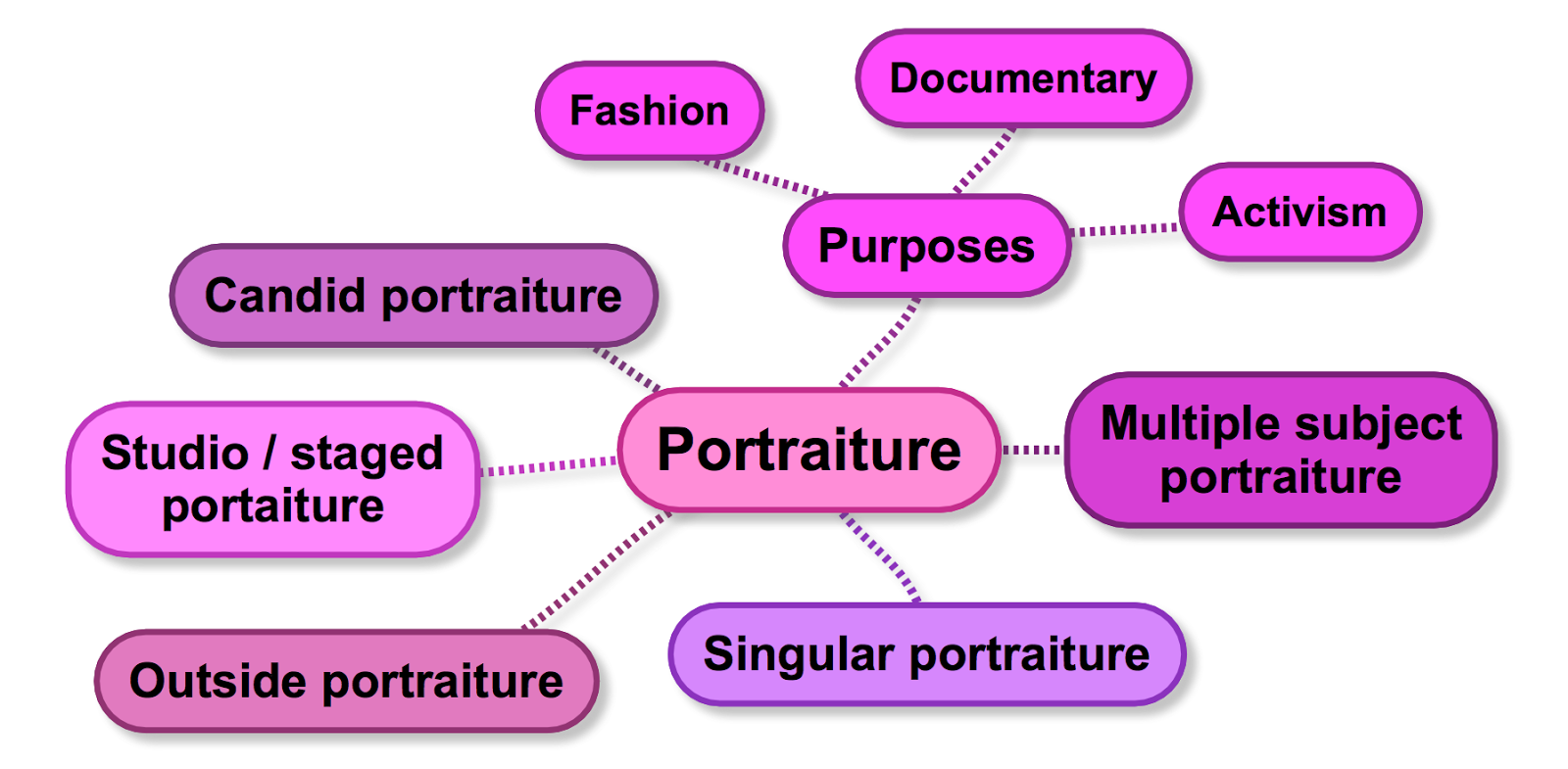
Emma Weeks AS Photography Component 1 Portraiture Mind map
Reduce Shutter Speed. Extending the exposure time enables more light to enter the camera. Nonetheless, to capture a sharp and clear photo in low-light conditions using a slow shutter speed without.